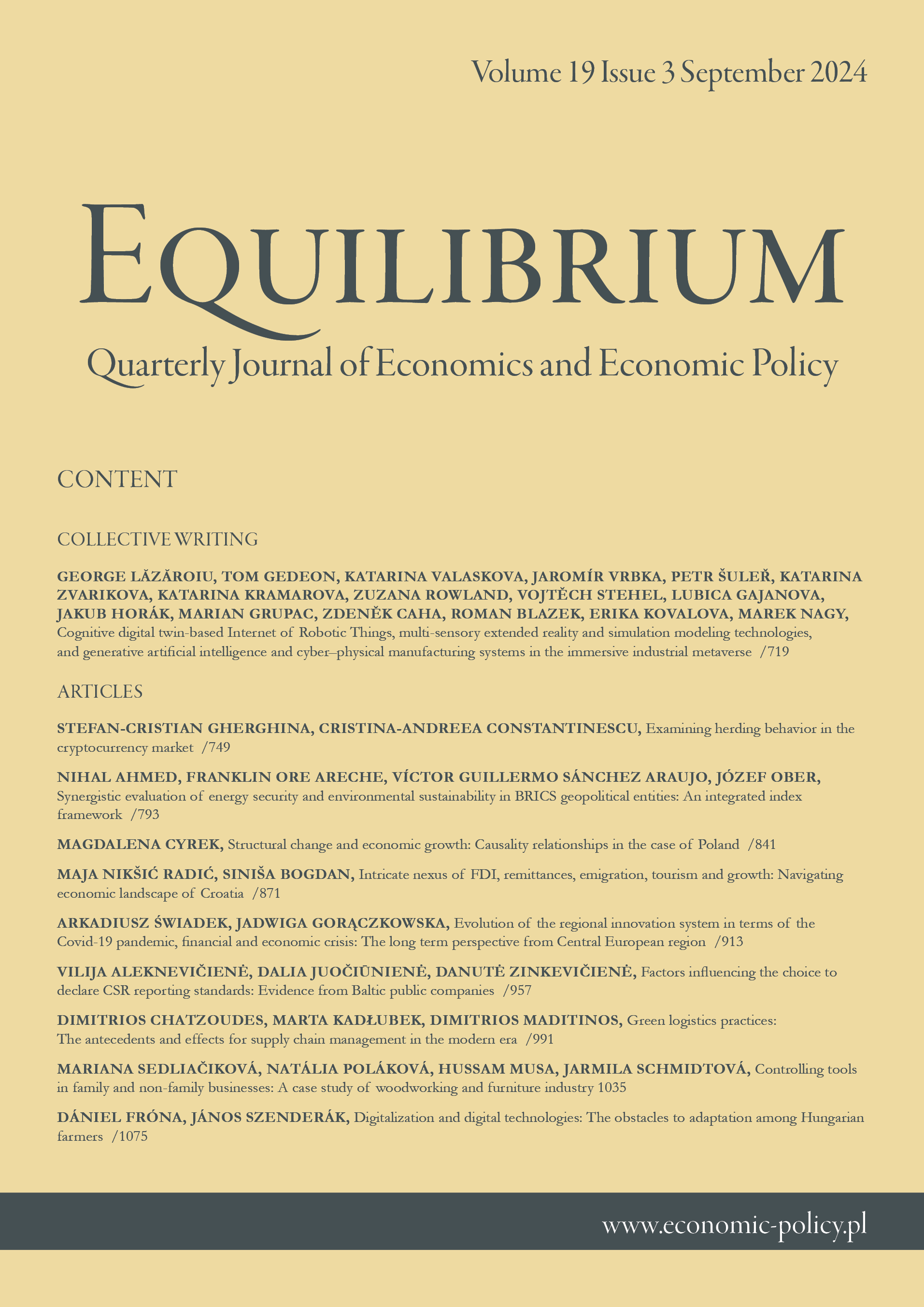Cognitive digital twin-based Internet of Robotic Things,
multi-sensory extended reality and simulation modeling
technologies, and generative artificial intelligence and
cyber–physical manufacturing systems in the immersive
industrial metaverse
Cognitive digital twin-based Internet of Robotic Things,
multi-sensory extended reality and simulation modeling
technologies, and generative artificial intelligence and
cyber–physical manufacturing systems in the immersive
industrial metaverse
Author(s): Tom Gedeon, Katarina Valaskova, Jaromir Vrbka, Petr Šuleř, Katarina Zvarikova, Katarina Kramarova, Zuzana Rowland, Vojtěch STEHEL, Ľubica Gajanová, Jakub Horák, Marián Grupač, Zdeněk Caha, Roman Blazek, Erika Kovalova, Marek NagySubject(s): Business Economy / Management, ICT Information and Communications Technologies
Published by: Instytut Badań Gospodarczych
Keywords: cognitive digital twin; Internet of Robotic Things; sensor; extended reality; simulation modeling; generative artificial intelligence; cyber–physical manufacturing system;
Summary/Abstract: Research background: Connected Internet of Robotic Things (IoRT) and cyber-physical pro- cess monitoring systems, industrial big data and real-time event analytics, and machine and deep learning algorithms articulate digital twin smart factories in relation to deep learning- assisted smart process planning, Internet of Things (IoT)-based real-time production logistics, and enterprise resource coordination. Robotic cooperative behaviors and 3D assembly opera- tions in collaborative industrial environments require ambient environment monitoring and geospatial simulation tools, computer vision and spatial mapping algorithms, and generative artificial intelligence (AI) planning software. Flexible industrial and cloud computing envi- ronments necessitate sensing and actuation capabilities, cognitive data visualization and sensor fusion tools, and image recognition and computer vision technologies so as to lead to tangible business outcomes. Purpose of the article: We show that generative AI and cyber–physical manufacturing sys- tems, fog and edge computing tools, and task scheduling and computer vision algorithms are instrumental in the interactive economics of industrial metaverse. Generative AI-based digital twin industrial metaverse develops on IoRT and production management systems, multi- sensory extended reality and simulation modeling technologies, and machine and deep learn- ing algorithms for big data-driven decision-making and image recognition processes. Virtual simulation modeling and deep reinforcement learning tools, autonomous manufacturing and virtual equipment systems, and deep learning-based object detection and spatial computing technologies can be leveraged in networked immersive environments for industrial big data processing. Methods: Evidence appraisal checklists and citation management software deployed for justifying inclusion or exclusion reasons and data collection and analysis comprise: Abstrackr, Colandr, Covidence, EPPI Reviewer, JBI-SUMARI, Rayyan, RobotReviewer, SR Accelerator, and Systematic Review Toolbox. Findings & value added: Modal actuators and sensors, robot trajectory planning and compu- tational intelligence tools, and generative AI and cyber–physical manufacturing systems enable scalable data computation processes in smart virtual environments. Ambient intelli- gence and remote big data management tools, cloud-based robotic cooperation and industrial cyber-physical systems, and environment mapping and spatial computing algorithms im- prove IoT-based real-time production logistics and cooperative multi-agent controls in smart networked factories. Context recognition and data acquisition tools, generative AI and cyber– physical manufacturing systems, and deep and machine learning algorithms shape smart factories in relation to virtual path lines, collision-free motion planning, and coordinated and unpredictable smart manufacturing and robotic perception tasks, increasing economic per- formance. This collective writing cumulates and debates upon the most recent and relevant literature on cognitive digital twin-based Internet of Robotic Things, multi-sensory extended reality and simulation modeling technologies, and generative AI and cyber–physical manufac- turing systems in the immersive industrial metaverse by use of evidence appraisal checklists and citation management software.
Journal: Equilibrium. Quarterly Journal of Economics and Economic Policy
- Issue Year: 19/2024
- Issue No: 3
- Page Range: 719-748
- Page Count: 20
- Language: English

